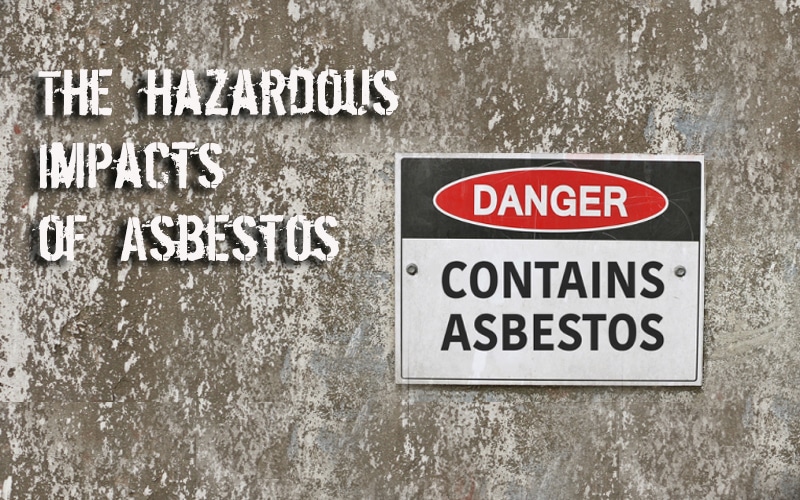Check out the latest industry trends, resources and SEMS news

Impact on Health
• Asbestosis: Commonly known as Progressive fibrosis of the lungs, it can vary in severity with progression towards bilateral fibrosis and honeycombing of the lung walls with symptoms like rales and wheezing. People exposed to Asbestos at home, in the environment, or at work should alert their medical specialists about the span and history of the exposure.
• Asbestos warts: The appearance of corns or warts of irregular shapes with a rigid surface are called Asbestos warts. They are caused when sharp fibers penetrate the skin and progress into overgrown callus-like warts.
• Pleural plaques: Development of distinct fibrous or partly thickened areas of skin that are caught on X-ray reports of individuals who have been exposed to Asbestos. Though pleural plaques are asymptomatic, in exceptional cases, this progresses into pleural thickening.
• Malignant mesothelioma: Cancer that develops on the mesothelium lining the lungs, abdomen, and chest walls. Asbestos exposure is the leading risk factor for mesothelioma.
Impact on Environment
• Impacting soil quality: Asbestos can be found in nature in the form of silicate substances in soft. Due to this, Asbestos does not usually contribute to soil degradation and has not shown noticeable effects on animals or plants. However, suppose the excess asbestos dust builds up in a single place for a long time owing to construction activities or illegal dumping. In that case, it can disturb the soil and form dangerous exhausts in the surrounding air. Asbestos fibers relatively small and light; hence, the dust often settles on top of the ground like a layer. If there is large construction or reconstruction activity in the surrounding area, the chances of the dust settling onto the ground is even higher. These dust particles can be carried by the wind further away from the original spot, increasing its overall impact on the environment and further risking the health of humans. The asbestos build-up in the soil surrounding the property should be safely handled by ensuring the removal of asbestos materials.
• Worsening water quality: Asbestos is used as a material for the construction of properties worldwide and used to strengthen drainage systems and cement pipes, both on the outside and inside buildings. Although Asbestos is proven helpful for increasing the sturdiness of concrete, its use also exposes water to significant contamination risks. Fibre degradation over time can be accelerated by fast-flowing water, and asbestos dust can contaminate the water supply of several buildings and be consumed during cleaning, bathing, or drinking. An additional issue with Asbestos polluting water quality is its low rate of biodegradation. Since these fibers do not break down fast, they cannot be flushed out of your system in a short period once consumed. Unfortunately, this also means that the fibre particles can be dispersed over huge distances. As a result, they can contaminate rivers, lakes, ponds, and other water bodies, ultimately contributing to the build-up of asbestos fibre in soil.
• Impacts on pets and health of wildlife: Usually, there is limited research about the long-term effects of asbestos contamination concerning environmental wildlife. Though airborne fibers have been proven to contribute to significant respiratory problems, it is quite practical to assume it might have similar effects when it comes to animals around us. At home, asbestos fibers could undeniably affect the health of your pet. Experts say that it may more than fifty years after exposure to Asbestos or lung cancer to progress in humans, but it takes only eight years in the case of household pets. Common symptoms of possible asbestos contamination include abnormal breathing issues, vomiting, and rapid weight loss. If these problems continue, it is best to take your pet to a vet for a thorough check-up.